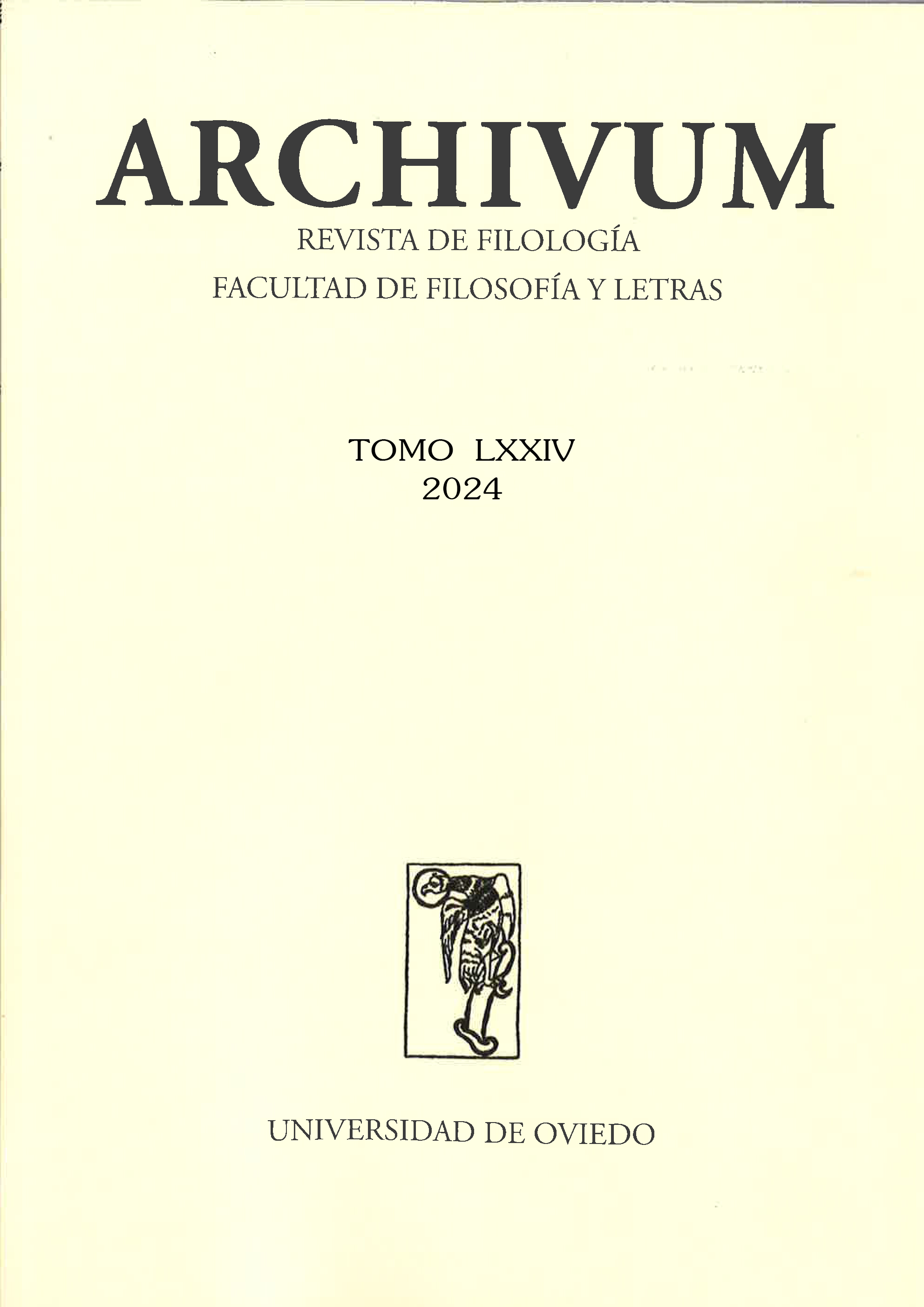Abstract
In this work, the fictional status of David Simon's works related to drug trafficking is analyzed, which can be considered within the subgenre of true crime, an evolution of the non-fiction novel or new journalism. The theoretical-critical instrument used is based on the theory of possible worlds, more specifically, on a modern interpretation of this where the syntactic components of transformation are also considered fundamental, along with the semantic and pragmatic ones, for the fictional construction. of a text, sometimes contradicting the authors' claims to establish pacts of factuality with the readers of their works. In the case of the works of David Simon that are taken into consideration, Homicide: A Year on the Killing Streets and The Corner: A Year in the Life of an Inner-City Neighborhood , origin of the famous TV series The Wire, the author uses the paratext to justify the non-fictional status of its works. Our purpose is to confront these paratexts with the main texts based on the previously mentioned theoretical developments with the objective of elucidating whether such claims can be sustained from the field of literary theory, concluding that this type of works should be assigned to the field of realistic fiction.References
Adriaensen, B. (2016). Introducción. En B. Adriaensen y M. Kunz, Narcoficciones en México y Colombia (pp. 9-24). Iberoamericana-Vervuet.
Albaladejo, T. (1981). Aspectos del análisis formal de textos. Revista Española de Lingüística, 11(1), 117-160.
Albaladejo, T. (1983). Componente pragmático, componente de representación y modelo lingüístico-textual. Lingua e Stile, 18(1), 3-46.
Albaladejo, T. (1986). Teoría de los mundos posibles y macroestructura narrativa. Publicaciones de la Universidad de Alicante.
Albaladejo, T. (1992). Semántica de la narración: la ficción realista. Taurus.
Baumgarten, A. (1975). Reflexiones filosóficas acerca de la poesía. Aguilar.
Chandler, R. (1976). Cartas y escritos inéditos. Ediciones de la Flor.
Doležel, L. (1988). Mimesis and Possible Worlds. Poetics Today, 9(3), 475-496.
Eco, U. (1978). Possible Worlds and Text Pragmatics: 'Un dramme bien parisien'. Versus, (19-20), 5-72.
Eco, U. (1984). Apocalípticos e integrados ante la cultura de masas. Lumen.
Friedman, N. (1955). Point of View in Fiction: The Development of a Critical Concept. PMLA, 70(5), 1160–1184.
Garrido Domínguez, A. (1997). Teorías de la ficción literaria: los paradigmas. En A. Garrido Domínguez (Comp.), Teorías de la ficción literaria (pp. 11-40). Arco Libros.
Genette, G. (1972). Figures III. Seuil.
Martín Cerezo, I. y Rodríguez Pequeño, J. (2011). Agatha Christie y la invención de la novela policíaca. En A. Calvo Revilla, J. L. Hernández Mirón y M. C. Ruiz de la Cierva (Eds.), Estudios de narrativa contemporánea española. Homenaje a Gonzalo Hidalgo Bayal (pp. 39-48). CEU Ediciones.
Martín Jiménez, A. (2015). Literatura y ficción. La ruptura de la lógica ficcional. Peter Lang.
Pavel, T. (1975). Possible Worlds in Literary Semantics. Journal of Aesthetics and Art Criticism, 34(2), 165-176.
Pavel, T. (1989). Fictional Worlds. Harvard University Press.
Petöfi, J. (1975). Vers une théorie partielle du texte. Helmut Buske.
Rodríguez Pequeño, J. (1995). Ficción y géneros literarios. Universidad Autónoma de Madrid.
Rodríguez Pequeño, J. (2008). Géneros literarios y mundos posibles. Eneida.
Rodríguez Pequeño, J. (2018). Títulos y epígrafes en el díptico de la guerra por las drogas de Don Winslow. Microtextualidades. Revista Internacional de microrrelato y minificción, 3, 19-40.
Rodríguez Santos, J. M. (2022a). Retórica de la ficción narcocriminal. Don Winslow y la guerra contra las drogas. Ediciones Universidad de Valladolid.
Rodríguez Santos, J. M. (2022b). Corrupción policial y la saga sobre la guerra contra las drogas de Don Winslow. Castilla. Estudios de Literatura, 13, 532-556.
Rodríguez Santos, J. M. (2023). Corrupción policial en la serie sobre la guerra contra las drogas de Don Winslow. En Á. Martín Escribá y J. Sánchez Zapatero (Eds.), Philip Marlowe en la universidad. Estudios sobre género negro (pp. 273-281). Dykinson.
Ryan, M-L. (1991). Possible worlds, artificial intelligence, and narrative theory. Indiana University Press.
Santos, D., Vásquez, A. y Urgelles, I. (2016). Introducción. Lo narco como modelo cultural. Una apropiación transcontinental, Mitologías hoy, 14, 9-23.
Simon, D. (2010a). Homicidio. Un año en las calles de la muerte. Principal de los Libros.
Simon, D. (2010b). Introducción. En VV. AA., The Wire. 10 dosis de la mejor serie de la televisión (pp. 7-46). Errata Naturae.
Simon, D. y Burns, E. (2011). La esquina. El año que David Simon pasó en las trincheras del negocio de la droga. Principal de los Libros.
Todorov, T. (1996). Las categorías del relato literario. En VV. AA., Análisis estructural del relato (pp. 161-198). Ediciones Coyoacán.

This work is licensed under a Creative Commons Attribution-NonCommercial-NoDerivatives 4.0 International License.


